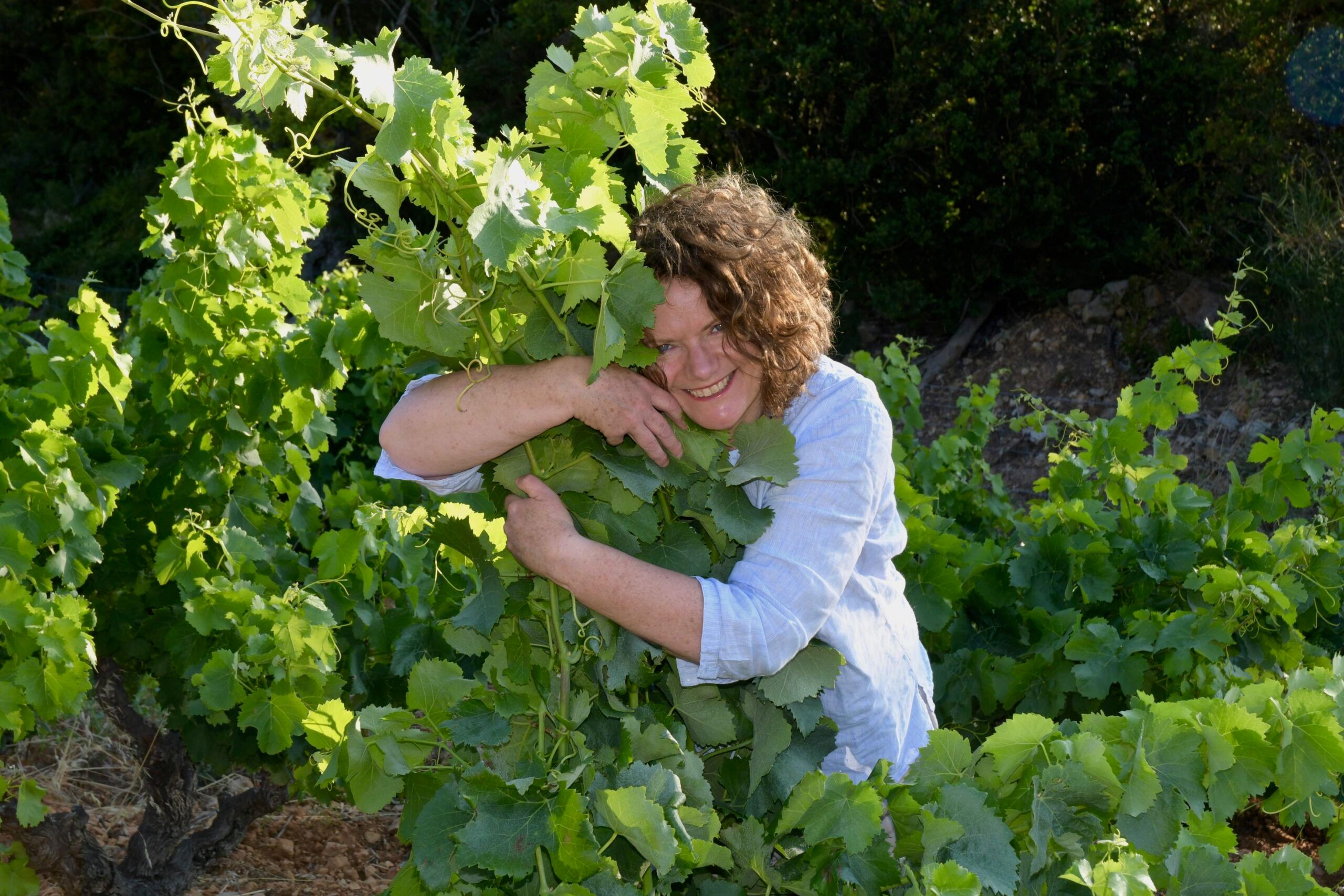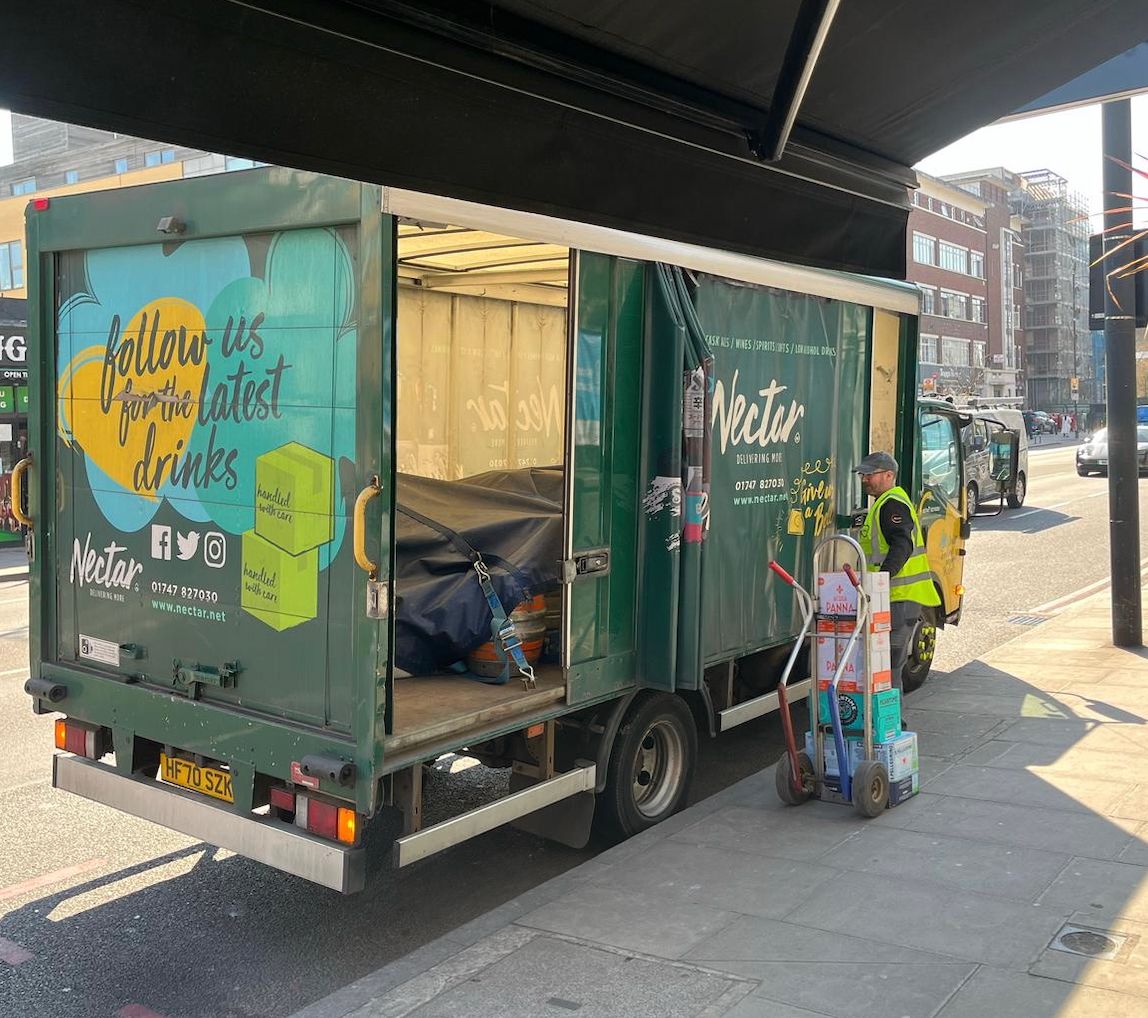Katie Jones’ Adopt an Old Vine scheme has two objectives: give her customers a unique chance to get closer to her and vines she owns and wines the makes; but also helps provide the funds to help her protect the vines and keep them healthy in the future across her Domaine Jones’ vineyards.
Katie Jones is one of those rare breed of wine producers who know how to make award winning, innovative wines, but have the marketing knowhow and sparkle to then go on and sell them around the world.
Ever since she started Domaine Jones, Jones has built up a loyal customer base – primarily through Naked Wines – who have all bought into her and the various ups and downs of life as a British ex pat living and making wine in the heart of the Languedoc Roussillion.
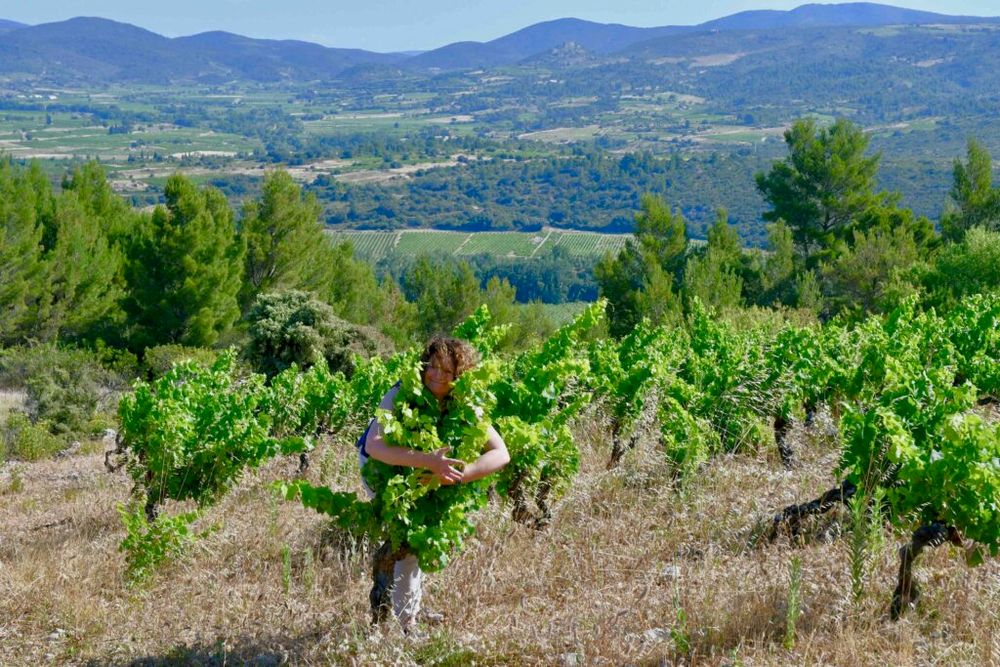
More vines for Katie Jones to hug…and put up for adoptionDuring lockdown she was able to forge even closer ties with those customers with her twice weekly ‘Vineyard Rambles’ where you could join her for breakfast on Instagram Live as she took walks through her vineyards, chatting to her late husband and winemaker, Jean Marc, and picking up on whatever happens to be taking place that day
Here she explains just what she hopes to achieve with her recently revived “Adopt an Old Vine” initiative that for €60 gives the ‘adopter’ a certificate of adoption, a photo fridge magnet of their vine, a name tag keyring with the name of their vine, a T shirt, a Domaine Jones tea towel featuring all 14 of Domaine Jones’ vineyards, as well as a description of the wine. A special metal tag will be tied to the vine with the name of the owner so that vine parents can visit their vine in situ. The adopter, under the new 2023 scheme, also has the opportunity to receive wine from the vine twice a year.
“Vine parents” will also be able to check in on their vine’s progress via a personal web page and will receive seasonal updates, information on the vineyard and links to videos and images.
Of the 2023 scheme Jones says: “It is heartbreaking to see the number of old vines decline in the Languedoc. They are the true representation of the terroir and such an integral part of local history. Whilst they may be expensive to work and maintain, they do make the best quality wine and I am pleased that in adopting an old vine my customers can help me to protect them.”
Jones also plans to create a unique old vine-tasting experience for visitors in her ‘Aguilar’ vineyard, named after the dramatic 11th Century Cathar castle, perched on a rocky outcrop high above the vines. The idea is to encourage people to come and visit, meet their vines over an apéritif and enjoy a tour of the vineyards.
“My old vines have been here for so long, they love the view and see me every day, but they’d relish the chance to meet some new faces. We’d love our vine parents to come down to chat with their old vines over a glass of wine.”
Here we re-publish the interview we did with Jones in 2021 about the whole initiative.
How did you come up with the idea for the old vine adoption scheme?
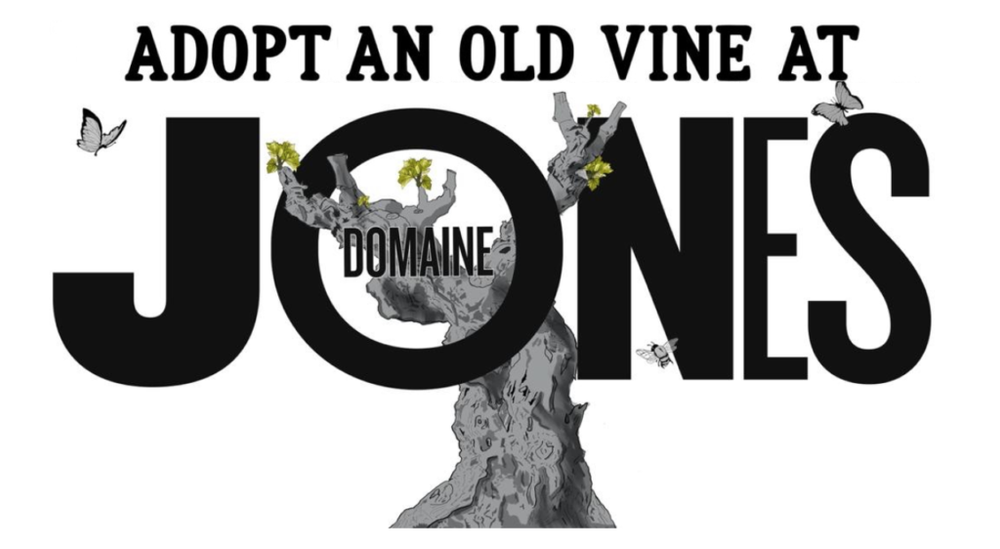
It was a natural extension of my vineyard rambles. There was so much interest in the rambles and the old vines, that I was looking for a way to take it further. I had been going with the rambles for almost a year, and I needed to start thinking of new ideas and content – although no growing season is exactly the same – but I wanted to continue it and inject some new interest, new ideas. Tim Atkin MW had mentioned this idea about olive tree adoption a few months back and then I started watching this programme about dog adoption called the Dog House.
It got me thinking. I had always wanted to give my vines a voice and make them more human, plus, through the rambles I had got to know the old vines so well, because I talk to my ramblers about the history of the vines and wine production in the area, life in the village, the wine crisis , the local cooperative, the wine laws and riots. I started to see things from their perspective – without the rambles I wouldn’t have had this knowledge or insight.
I think I helped bring it to life for my ramblers too, they were looking at these vines every morning and started to understand what they represented. Before the pandemic, I was doing a lot more travelling, and much less time in the vineyard – so the rambles have me brought me closer to the vines too.
Recently, Tim came on as a guest on the show and I made him the first honorary vine parent – he adopted Brassens, just before the terrible frost struck (Brassens survived thankfully).
How did you pull the scheme together?
So then we put it all together really quickly to roll out the scheme for people to adopt – the first 100 old vines. I’ve been out in the vineyards all week taking pics of the old vines and talking to my ramblers about the different names, characteristics. And I have a great team around who helped me bring it to life.
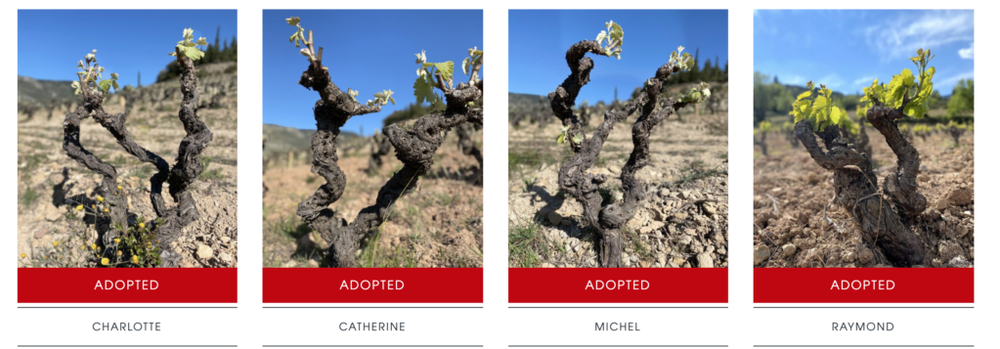
Take your pick. Domaine Jones’ website allowed customers to go and select a vine to adopt by name, each with its own back story
What sort of old vines do you have in your vineyards and how important are they to the styles of wine you make?
They are from 45 years to 116. They are the stray dogs nobody else wants, Grenache Gris, Carignan Gris, low yielding Carignan. If anyone else had bought these vines they would have ripped up the vineyards and planted younger more vigorous vines.
I only have old vines – that is my style and it allows me to do really quirky things, single varietal unusual wines like Carignan Gris and Macabeu and the Hairy Grenache (a hairy leafed Grenache aka Lledoner Pelut) so I really give the vine variety the limelight – and most importantly produce great quality wines from the exceptionally small yields.

Each old vine has its own name and a back story
You are also connecting this scheme to the Old Vine Project around the world – why do you think it is important for winemaking industry as a whole to protect and promote old vines?
They represent such a large part of our history, they tell a thousand stories of the people who have worked with them over the years and the people who have enjoyed wines from their fruit. They need more care and attention, but it is worth it for the quality and style of wine that they produce.
It is helping to encourage a long term awareness, a commitment. Until I showed people my old vines they didn’t understand what it meant to write ‘old vines’ on a wine label.’ Unless you show it people don’t get it. Wines from old vines get better with time.
It is also a nice innovative way to get your customers more closely involved in what you are doing – which we have seen with your vineyard rambles?

You can still join Katie Jones on her Vineyard Rambles on Instagram Live
Yes, my followers and customers have loved getting to know the different vineyards and the vines and varieties in each. I made a tea-towel with a map of my vineyards (designed by Wine Society’s Freddy Bulme’rs dad, Tim Bulmer) so each morning ramblers can see where they are on the map when I am standing in the vines.
The next thing for us will be wine tourism. So it is giving people another reason to come to Tuchan to see their old vine. It is not that easy to get here so you do need a reason and the idea they would have a vine to come and say hello to.
Is it also an innovative way to run a mini crowdfunding campaign for you and the winery?
It’s not really crowd-funding as we are not using the money to invest in anything. It is an awareness exercise to support and promote old vines – adopters get more in return than the actual cost of the adoption – via the merchandise and the goodies, plus my time and during the year glimpses of their vine, plus money off wine if they do choose to purchase.
There are other adopt-a-vine schemes that are just an incentive for you to purchase wine, but these are old vines and the wine is an option here. It’s more about understanding the vines and the vineyards, of course I do hope people buy my wine too, but the main aim is to raise awareness for my old vines and this way of farming and just how difficult farming is. It is such a different world and you can see how we depend on nature and the seasons and the weather. The first thing I do now when I wake up is look at the weather.
How many old vines do you have in your vineyards that you could potentially bring into the scheme?
I have got 40,000, but I only have plans to do this for a few hundred vines every few months, because we have to be realistic, due to the logistics and to keep it personal and authentic and to be able to manage it properly. Again like the old vine it is about quality rather than quantity.
- You can find out more about Katie Jones’s Adopt an Old Vine scheme here.
